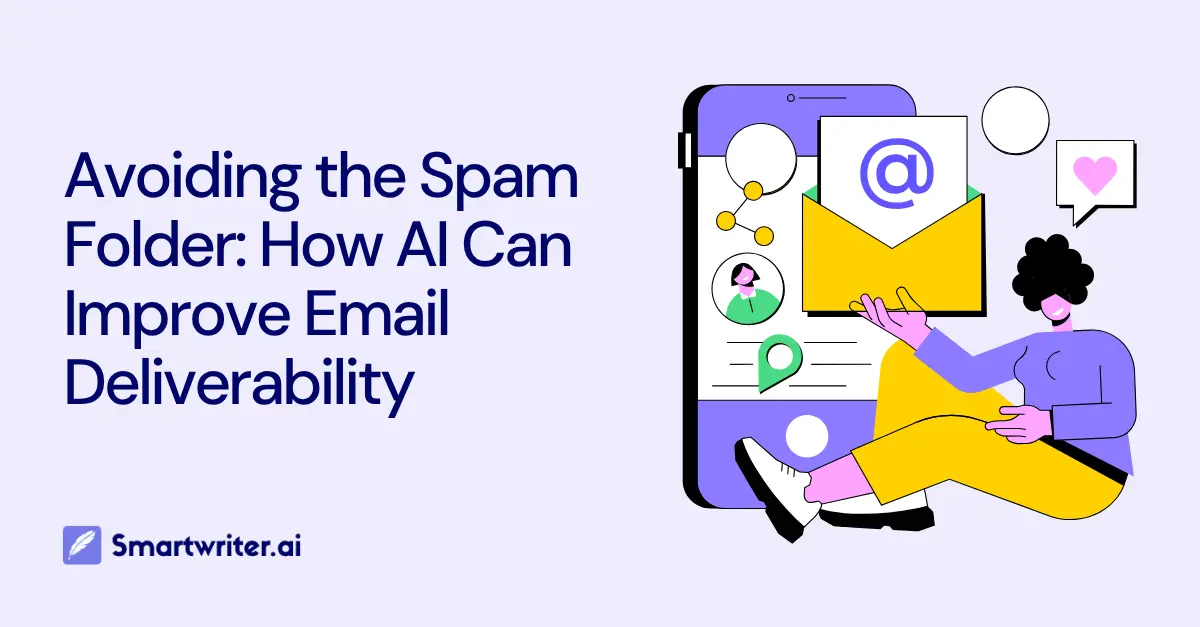Avoiding the Spam Folder: How AI Can Improve Email Deliverability

Email remains one of the most effective marketing tools, but even the best message falls flat if it never reaches the inbox. Spam filters have become more sophisticated, and brands must adapt or risk going unnoticed. Artificial intelligence (AI) now plays a vital role in improving email deliverability by helping marketers understand user behavior, optimize content, and maintain strong sender reputations.
Why Email Deliverability Matters
Email deliverability refers to the ability of an email to land in the recipient’s inbox rather than the spam or promotions folder. Several factors affect this, including sender reputation, subject line quality, content relevance, engagement metrics, and technical setup like SPF, DKIM, and DMARC records.
Poor deliverability can severely limit a campaign’s performance. If your messages are filtered out before a user sees them, click and open rates will suffer, no matter how well-designed the campaign may be.
How AI Helps Improve Deliverability
1. Smarter Segmentation Based on User Behavior
Traditional segmentation relies on static rules. AI tools analyze past interactions to build dynamic audience segments. These tools study engagement patterns—such as open frequency, time of activity, and preferred device usage—to send emails at the right moment to the right person.
Sending emails to disengaged users repeatedly increases the risk of landing in spam folders. AI mitigates this by automatically excluding low-engagement users or adjusting sending frequency.
2. Optimized Send Times and Frequency
AI uses predictive modeling to determine when users are most likely to engage. Instead of guessing or relying on generic industry data, marketers can now automate delivery based on personalized engagement windows.
Over-emailing can lead to unsubscribes or spam complaints. AI-driven frequency control avoids this by adjusting cadence based on how recipients interact over time.
3. Content Analysis to Prevent Spam Triggers
Words like “guaranteed,” “free,” and “urgent” often trigger spam filters. AI-powered email platforms scan subject lines and body content to detect and flag risky phrases or formatting issues.
Machine learning models trained on billions of emails can identify patterns that human writers might miss. These insights help ensure your content meets deliverability standards without sounding robotic or overly cautious.
4. Email Design and Device Optimization
AI assists in building emails that render correctly across different devices and screen sizes. Broken layouts or heavy images can be a red flag for spam filters. AI tools ensure formatting consistency, compress image sizes, and suggest design adjustments that improve performance.
5. Improving Sender Reputation
Your sender score is like a credit score for email marketing. It is influenced by factors such as complaint rates, bounce rates, engagement, and sending practices. AI tracks these metrics in real-time and alerts marketers when they start to slip.
Maintaining a high sender reputation ensures your emails are welcomed by Internet Service Providers (ISPs) and major inbox providers like Gmail and Outlook.
6. Detecting Spam Traps and Fake Addresses
Spam traps are email addresses created to catch spammers. Sending to these can damage your domain reputation. AI can analyze patterns in your email list to flag suspicious addresses, helping you clean your list and avoid potential penalties.
AI also helps reduce bounce rates by identifying invalid or inactive email addresses before a campaign goes live. To further protect your domain and improve deliverability, using a DKIM checker ensures your emails are properly authenticated and trusted by recipient servers.
The Human Element Still Matters
While AI provides the intelligence, human strategy remains critical. A marketing consultant can interpret AI data, align insights with brand voice, and develop creative that resonates with real people. Automation streamlines the process, but connection drives results.
Consultants also ensure that technical setups like domain authentication and inbox monitoring are handled correctly. These behind-the-scenes elements are essential for long-term deliverability success.
Best Practices for AI-Powered Email Marketing
To make the most of AI without over-relying on automation, consider the following:
- Use verified and permission-based email lists
- Regularly clean your list with AI tools to remove inactive users
- Monitor sender score and complaint rates consistently
- Create personalized content that aligns with audience interests
- Test subject lines and formats using AI-powered A/B testing
- Balance automation with real-time human insights
Final Thoughts
Avoiding the spam folder is no longer just about avoiding trigger words. It's about building trust, maintaining engagement, and sending emails that people want to receive. AI brings precision and scalability to this process, but the strategy behind it still depends on thoughtful execution.
By combining machine intelligence with human creativity, businesses can strengthen their email campaigns and ensure their messages reach the inbox. For brands serious about consistent performance, partnering with a consultant who understands AI tools and audience behavior can make a measurable difference.






.svg)